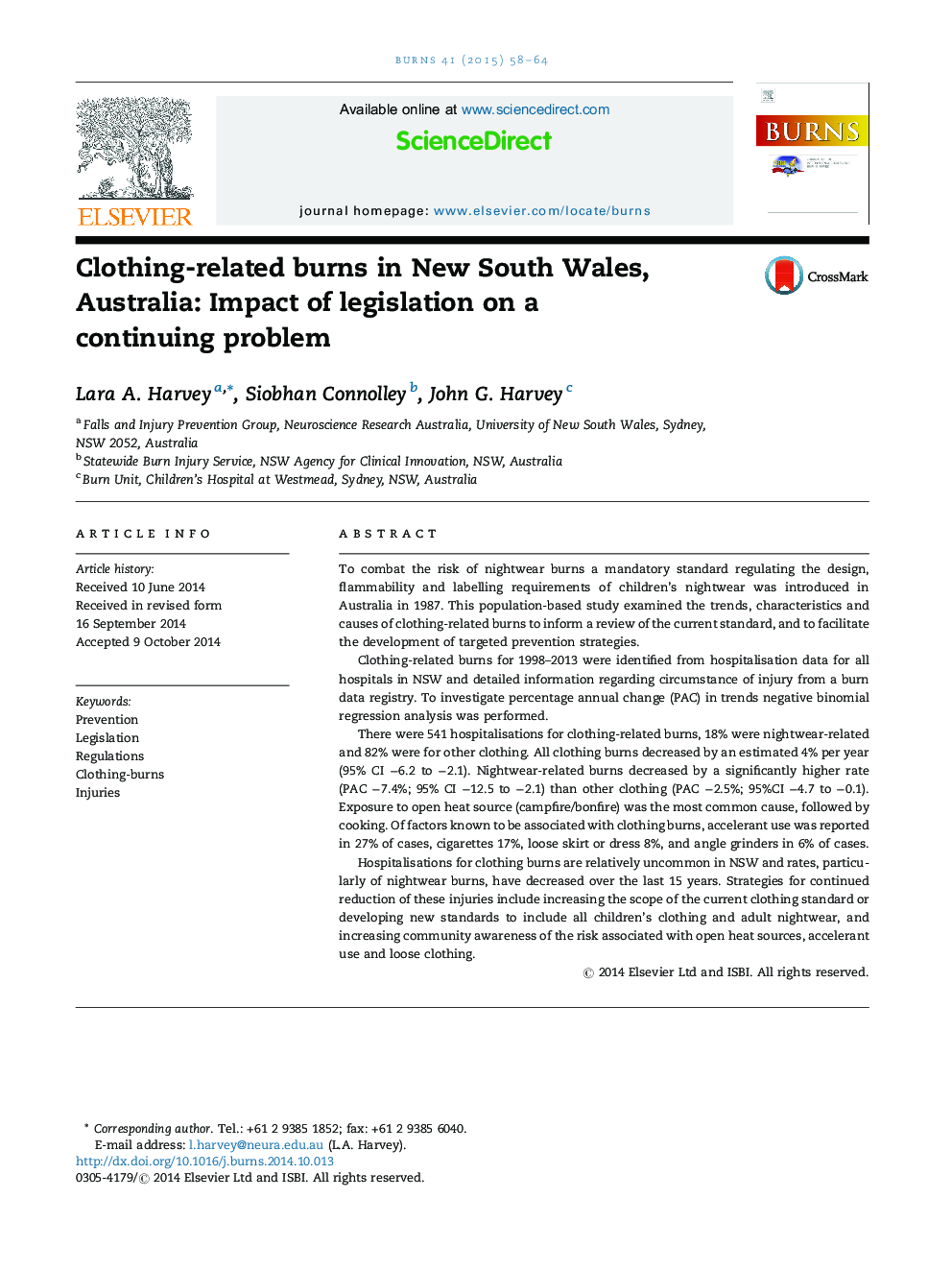| کد مقاله | کد نشریه | سال انتشار | مقاله انگلیسی | نسخه تمام متن |
|---|---|---|---|---|
| 3104215 | 1191645 | 2015 | 7 صفحه PDF | دانلود رایگان |
• Clothing related burns remain relatively rare in NSW (2% of all burn injury hospitalisations).
• Hospitalisations for all clothing burns have decreased by 4% per year over last 15 years.
• Hospitalisation for nightwear related burns has decreased at significantly faster rate (7.4% per year) than other clothing burns (2.5% per year).
• Accelerant use, cigarettes, loose clothing and angle grinders were common risk factors.
To combat the risk of nightwear burns a mandatory standard regulating the design, flammability and labelling requirements of children's nightwear was introduced in Australia in 1987. This population-based study examined the trends, characteristics and causes of clothing-related burns to inform a review of the current standard, and to facilitate the development of targeted prevention strategies.Clothing-related burns for 1998–2013 were identified from hospitalisation data for all hospitals in NSW and detailed information regarding circumstance of injury from a burn data registry. To investigate percentage annual change (PAC) in trends negative binomial regression analysis was performed.There were 541 hospitalisations for clothing-related burns, 18% were nightwear-related and 82% were for other clothing. All clothing burns decreased by an estimated 4% per year (95% CI −6.2 to −2.1). Nightwear-related burns decreased by a significantly higher rate (PAC −7.4%; 95% CI −12.5 to −2.1) than other clothing (PAC −2.5%; 95%CI −4.7 to −0.1). Exposure to open heat source (campfire/bonfire) was the most common cause, followed by cooking. Of factors known to be associated with clothing burns, accelerant use was reported in 27% of cases, cigarettes 17%, loose skirt or dress 8%, and angle grinders in 6% of cases.Hospitalisations for clothing burns are relatively uncommon in NSW and rates, particularly of nightwear burns, have decreased over the last 15 years. Strategies for continued reduction of these injuries include increasing the scope of the current clothing standard or developing new standards to include all children's clothing and adult nightwear, and increasing community awareness of the risk associated with open heat sources, accelerant use and loose clothing.
Journal: Burns - Volume 41, Issue 1, February 2015, Pages 58–64
